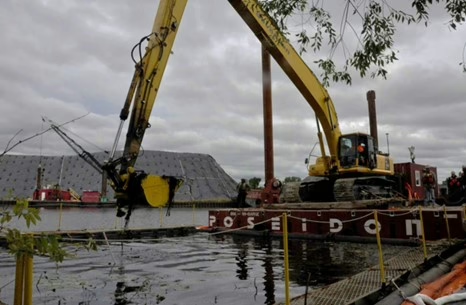The Nature Conservancy of Canada (NCC) is asking motorists to watch out for turtles on the roadways this Canada Day long weekend.
Now is an active time for turtles to be spotted outside of their normal habitat and while their shell protects them from predators, it is no match for a vehicle.
The Conservancy’s Andrew Holland says turtles are more likely to be on the side of the road, sunbathing or travelling to new nesting sites. He says drivers should be more cautious in areas near wetlands, sand, and water.
“We’re seeing more roads go into areas that were once habitats for wildlife,” said Holland. “Certainly, as you see more urban sprawl and roads be put in places, more turtles are being struck in areas that they weren’t before.”
Turtles count on the survival of the adults, especially the females, in order to maintain their population. According to Holland, turtles can take up to 25 years before reproducing, and the survival rate of eggs is very low.
“Approximately only two eggs out of 100 become adult turtles,” said Holland. “A loss of one adult turtle is the loss of 20 years of development.”
The conservancy understands that motorists sometimes can’t swerve out of the way, but reducing their speed, gives a turtle a better chance at safety.
See a turtle? Here’s what you can do
• To help a turtle safely cross the road, first make sure the road is safe for you to pull over and help.
• Move the turtle in the direction it was going, otherwise, it will likely try to cross again.
• For turtles that hide their heads in their shells, simply pick the turtle up like a hamburger and gently hold its belly and shell as you carry it across the road.
• Carry the turtle close to the ground – you don’t want to drop it.
Snapping turtles can weigh as much as 34 kilograms and have heavy spiked tails and massive armoured shells.
These turtles cannot hide their heads in their shells and have dangerously sharp snouts. In order to avoid injury for both you and the turtle, lift them using the “handles” on either side of their tails on the back of their shells and “wheelbarrow” them across the road on their front legs.
If you have a car mat or a shovel, carefully slide the turtle onto this and drag the matt or shovel across the road.
“Turtles are the unsung hero of our environment,” said Holland. “They do the work of a water filter because they eat dead plants, dead insects. They perform an important role in our environment that many people may not be aware of.”
